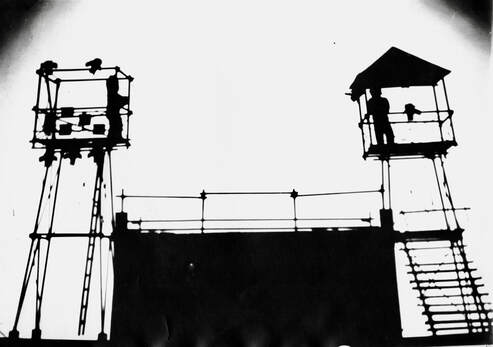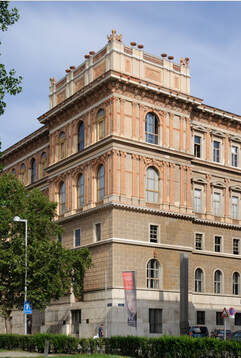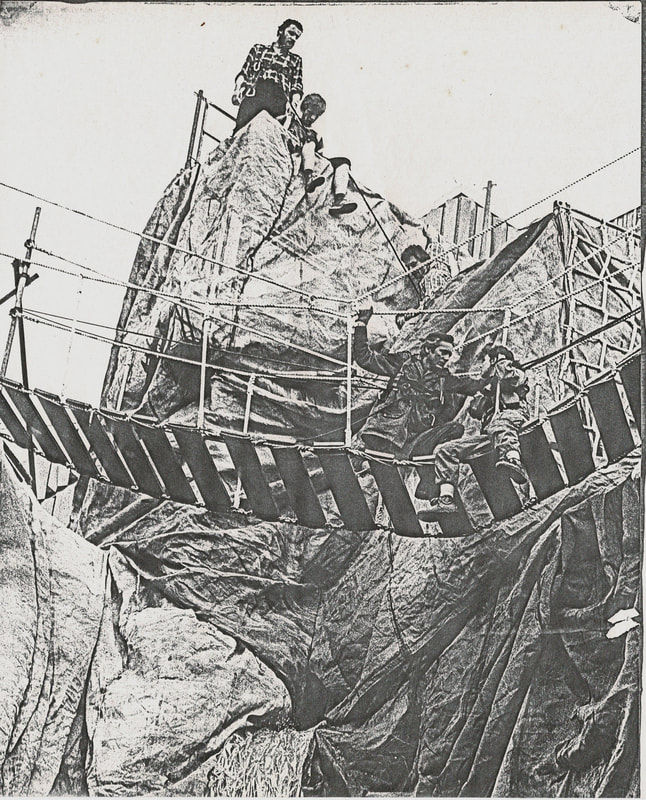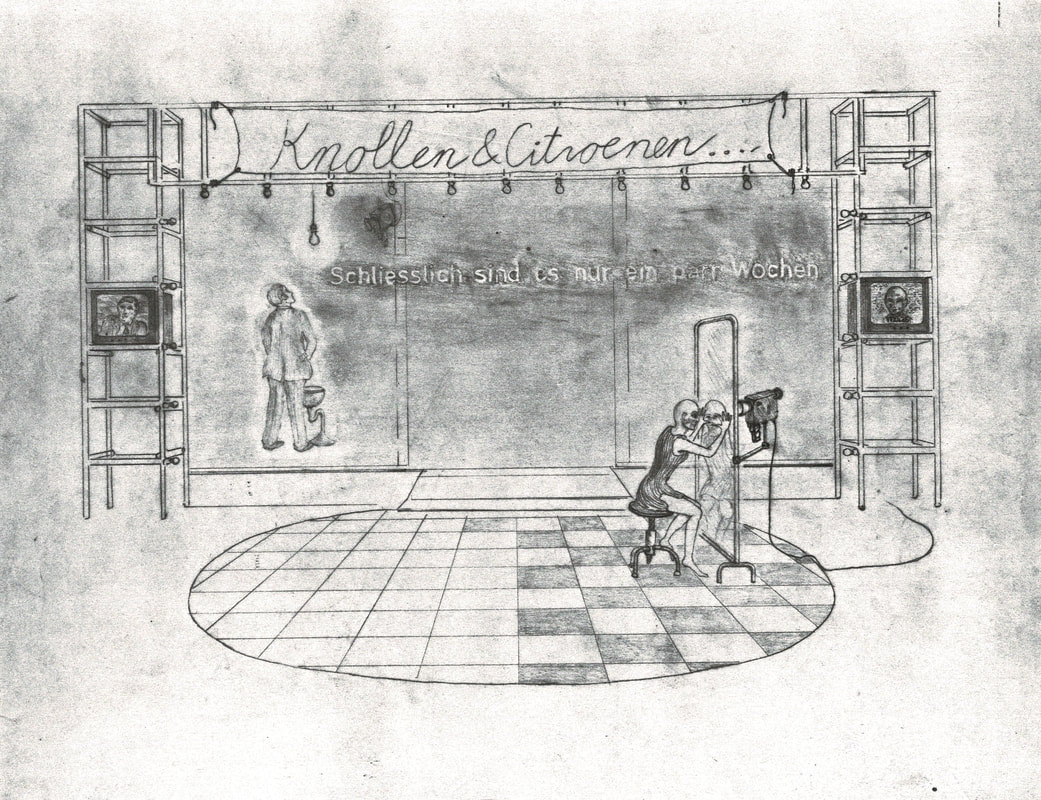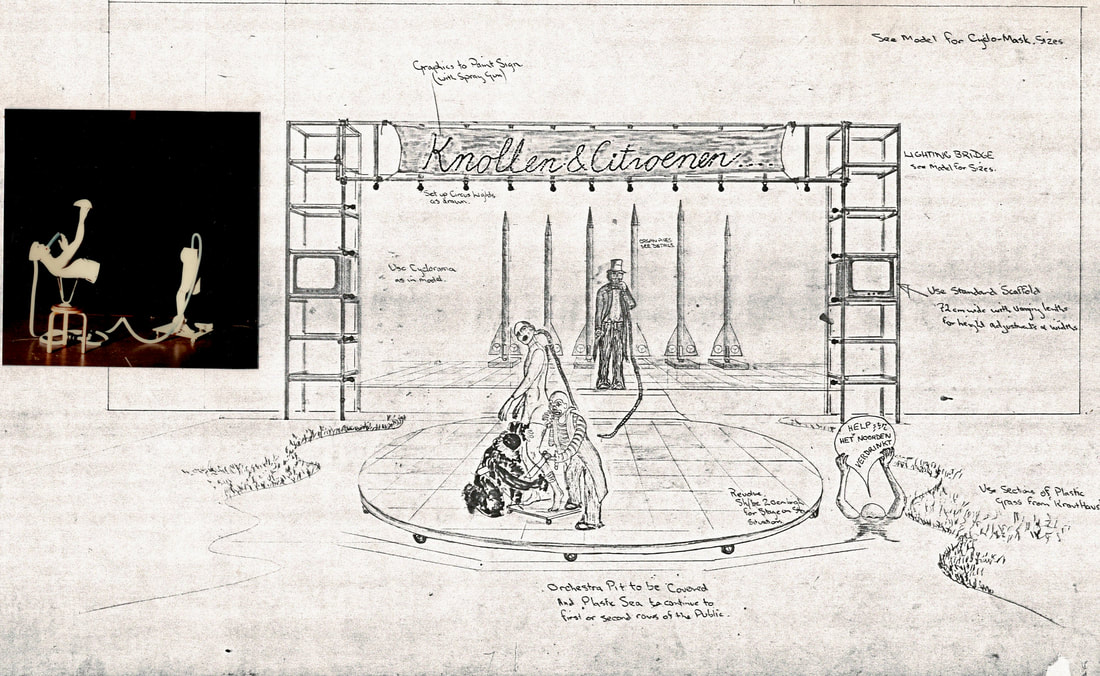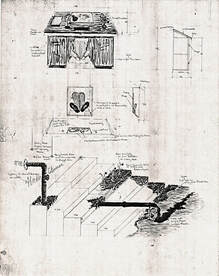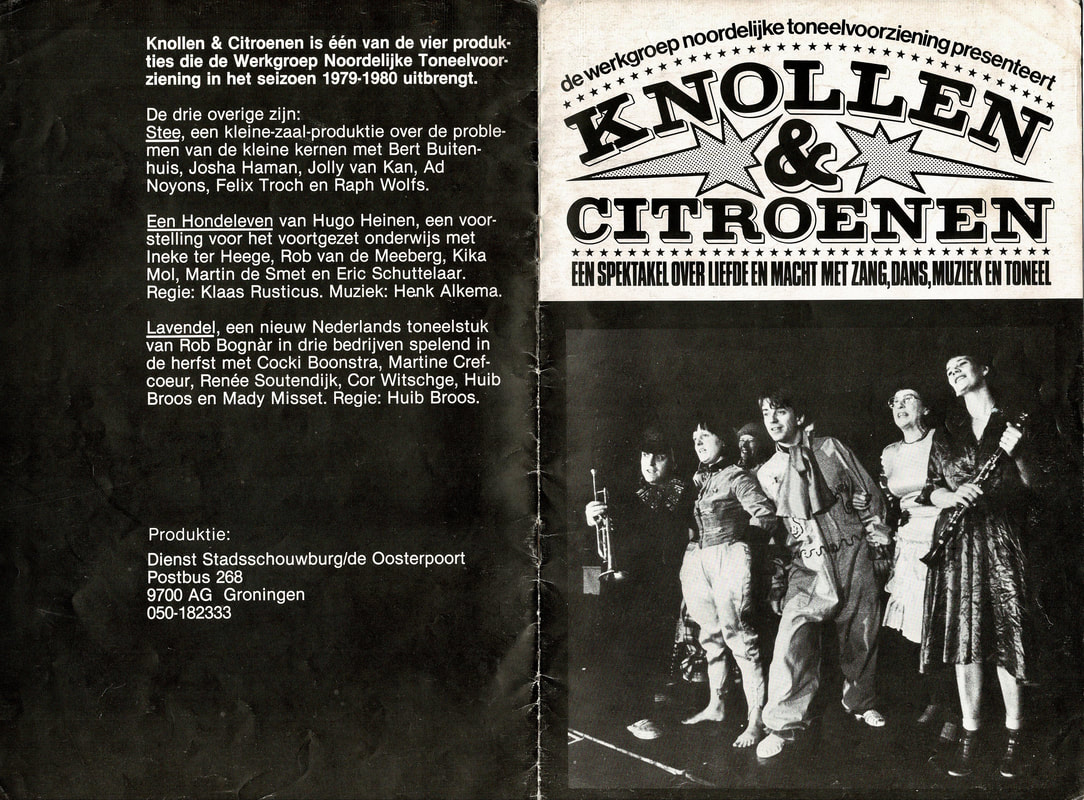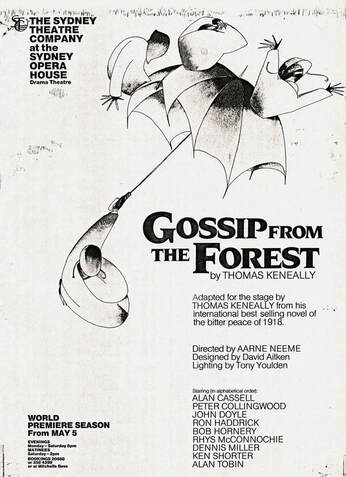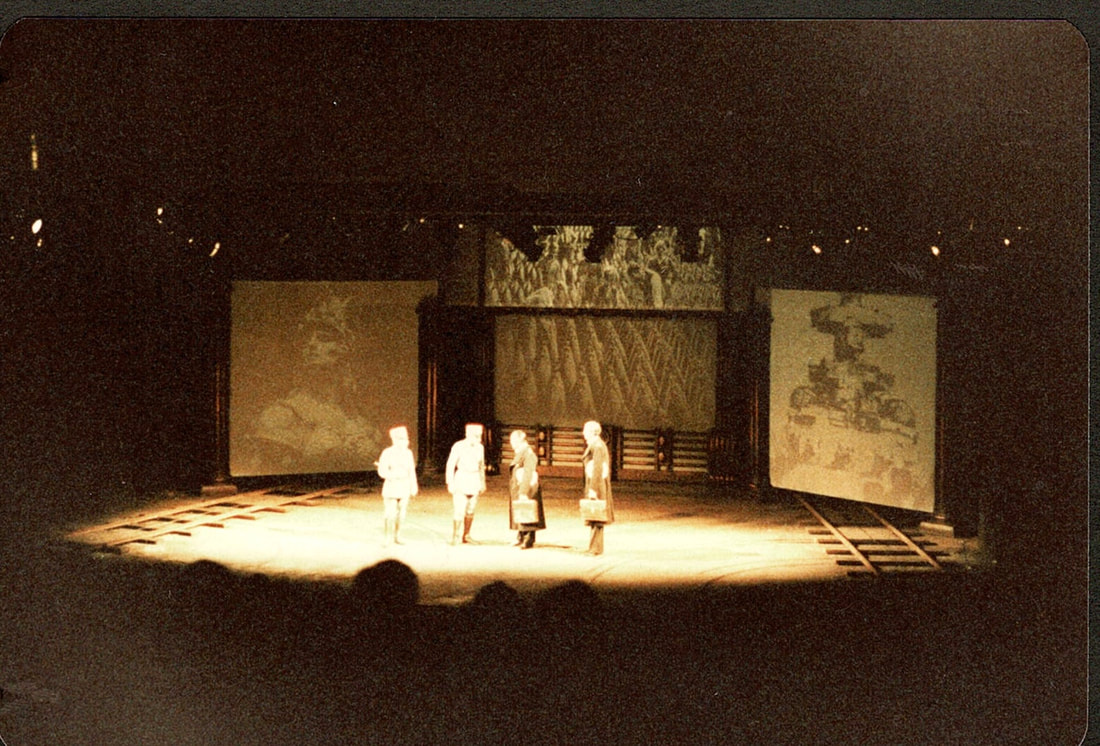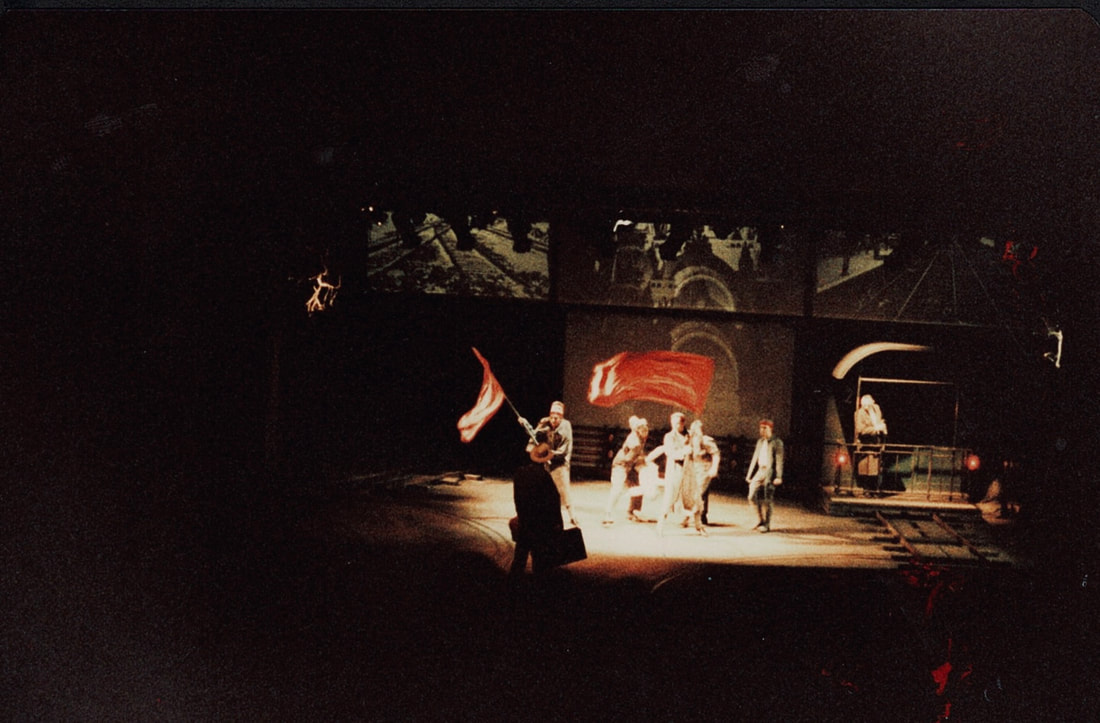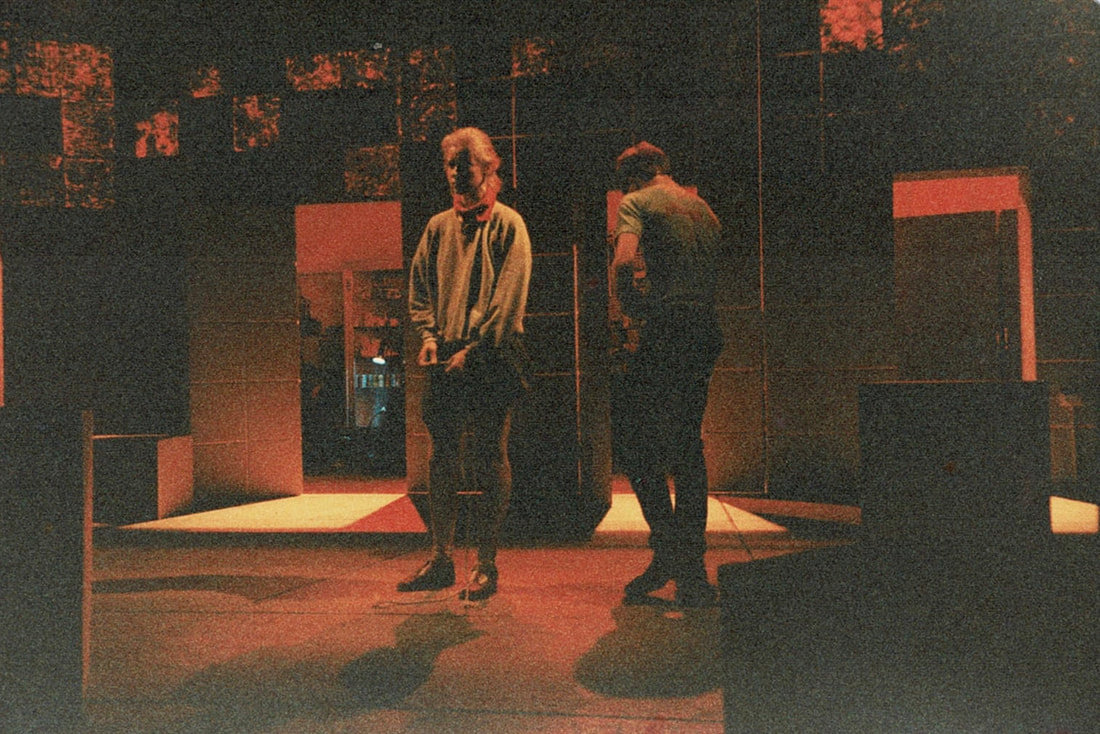Theatre Design
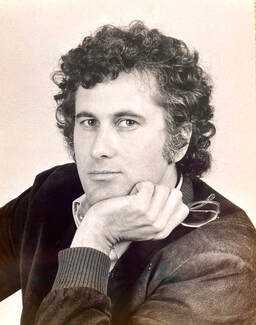
TV & Theatre Design
In his early 20s, David worked in film and television as a director’s assistant and props buyer and also trained with METV (predecessor to SBS) to become a designer and later joined ABC TV as a design assistant. In theatre he designed for the Ensemble and New Theatre in Sydney. In 1975, he was accepted into the Master Class for Stage Design at the Vienna Academy of Fine Arts in Austria and graduated in 1978 with a Diploma and the Professorial Prize.
During his time in Europe, David designed theatre productions in Austria, Germany and Holland and was first assistant designer at the Vienna Opera House, assisting the designer, Gunther Schneider-Siemssen along with several international Opera productions in Germany, Italy and the USA, working with directors Gotz Friedrich and Otto Schenk, and the conductor, Herbert von Karajan. He also worked with George Tabori, a leading Brecht director co-designing the Jasager/Der Neinsager for the State Theatre, Kassel. Back in Sydney, David designed Thomas Keneally’s Gossip from the Forest, Sydney Theatre Company (Sydney Opera House, 1983) and Michael Gow’s The Kid at the Nimrod Theatre (1983).
In his early 20s, David worked in film and television as a director’s assistant and props buyer and also trained with METV (predecessor to SBS) to become a designer and later joined ABC TV as a design assistant. In theatre he designed for the Ensemble and New Theatre in Sydney. In 1975, he was accepted into the Master Class for Stage Design at the Vienna Academy of Fine Arts in Austria and graduated in 1978 with a Diploma and the Professorial Prize.
During his time in Europe, David designed theatre productions in Austria, Germany and Holland and was first assistant designer at the Vienna Opera House, assisting the designer, Gunther Schneider-Siemssen along with several international Opera productions in Germany, Italy and the USA, working with directors Gotz Friedrich and Otto Schenk, and the conductor, Herbert von Karajan. He also worked with George Tabori, a leading Brecht director co-designing the Jasager/Der Neinsager for the State Theatre, Kassel. Back in Sydney, David designed Thomas Keneally’s Gossip from the Forest, Sydney Theatre Company (Sydney Opera House, 1983) and Michael Gow’s The Kid at the Nimrod Theatre (1983).
Diplom - Academy of Fine Arts Vienna
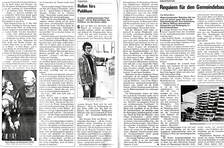
Austrian Magazine PROFILE Nr. 35 V 29. Aug 1978
THEATRE
A Role for the Audience
In a three dimensional Total Theatre a Stage Designer proposes to wrench the audience out off their seats.
Opposing Dunsinane Castle whose looming walls are formed from weathered railway sleepers, the war machine slowly and threateningly creeps its way towards it.
I will not be afraid of death and bane boasted the king murderer and throne Usurper, Macbeth a little before, till Birnan Wood comes to Dunsinane!
THEATRE
A Role for the Audience
In a three dimensional Total Theatre a Stage Designer proposes to wrench the audience out off their seats.
Opposing Dunsinane Castle whose looming walls are formed from weathered railway sleepers, the war machine slowly and threateningly creeps its way towards it.
I will not be afraid of death and bane boasted the king murderer and throne Usurper, Macbeth a little before, till Birnan Wood comes to Dunsinane!
However, the three witches prophesy is fulfilled: the army of the avenger and Scottish Prince Malcolm advances upon the railway sleeper fortress comouflaged with forest foliage.
The living Birnam Wood – the avenging host – is played by the theatre audience seated on the moveable platform together with a siege tower that simultaneously illuminates the stage and creeps towards the usurper’s castle. The safe and soothing boundary between stage and audience is ruptured. “If you don’t like it,” the 30 year-old stage designer David Aitken, advises the rattled audience on the rolling war machine, “try jumping off!"
His unconventional and imaginative stage concept for Shakespeare’s bloodthirsty tragedy, “Macbeth”, which earned the Australian-born and Vienna emigrant Aitken, his diploma at the Vienna Academy of Fine Arts, was also awarded the 10,000-Schilling Professor’s Prize in the early summer. Whether his bold concept will ever make it to traditional theatre remains dubious. It has been years since a serious director from within the German-speaking theatre scene has taken on Shakespeare’s bloody show of force.
Several directors who no longer wish to recognise the sacred boundary between stage and audience have already prevented their audience from sinking reverently into their comfy seats. In Germany, Bauhaus architect Walter Gropius was one of the first set designers to experiment with moving galleries. And again in Berlin, with the set designers for Peter Stein’s “Schaubühne am Halleschen Ufer”. Two years ago, at the “Memory” Shakespeare Collage, Karl Emst Herrmann allowed the audience to walk around between multiple stage sets during the performance, and shortly thereafter (in a production of Shakespeare’s “As you like it”) even sent them through long corridors, meaning theatre-goers no longer had any need to sit still: there weren’t any seats to begin with.
More recently at the Vienna Festival, the audience once again became part of the local theatre scene when German theatre star Claus Peymann, in his staging of “Faust” – for example in the Walpurgnis Night scene, simply sent the audience, along with the actors, out into the street.
For stage designer Aitken, who previously worked in Australian television and designed a two-storey set in Vienna for the Nestroy street theatre event the previous year, “Macbeth” was the most suitable drama for his “three-dimensional total theatre”. He used the three-part Shakespeare stage and expanded it around the gallery level, which had actually already been used for Shakespeare plays on several previous occasions. Through the selection of materials – for instance the cheap railway sleepers – Aitken believes he can also avoid high equipment costs. And his greatest gag – the moving audience platform – he believes to be just as feasible: in modern theatres such as the “Theater im Künstlerhaus”, for which Aitken designed the “Macbeth” staging, which for the time being only exists in model form, the public gallery could be made mobile with only minor modifications.
His unconventional and imaginative stage concept for Shakespeare’s bloodthirsty tragedy, “Macbeth”, which earned the Australian-born and Vienna emigrant Aitken, his diploma at the Vienna Academy of Fine Arts, was also awarded the 10,000-Schilling Professor’s Prize in the early summer. Whether his bold concept will ever make it to traditional theatre remains dubious. It has been years since a serious director from within the German-speaking theatre scene has taken on Shakespeare’s bloody show of force.
Several directors who no longer wish to recognise the sacred boundary between stage and audience have already prevented their audience from sinking reverently into their comfy seats. In Germany, Bauhaus architect Walter Gropius was one of the first set designers to experiment with moving galleries. And again in Berlin, with the set designers for Peter Stein’s “Schaubühne am Halleschen Ufer”. Two years ago, at the “Memory” Shakespeare Collage, Karl Emst Herrmann allowed the audience to walk around between multiple stage sets during the performance, and shortly thereafter (in a production of Shakespeare’s “As you like it”) even sent them through long corridors, meaning theatre-goers no longer had any need to sit still: there weren’t any seats to begin with.
More recently at the Vienna Festival, the audience once again became part of the local theatre scene when German theatre star Claus Peymann, in his staging of “Faust” – for example in the Walpurgnis Night scene, simply sent the audience, along with the actors, out into the street.
For stage designer Aitken, who previously worked in Australian television and designed a two-storey set in Vienna for the Nestroy street theatre event the previous year, “Macbeth” was the most suitable drama for his “three-dimensional total theatre”. He used the three-part Shakespeare stage and expanded it around the gallery level, which had actually already been used for Shakespeare plays on several previous occasions. Through the selection of materials – for instance the cheap railway sleepers – Aitken believes he can also avoid high equipment costs. And his greatest gag – the moving audience platform – he believes to be just as feasible: in modern theatres such as the “Theater im Künstlerhaus”, for which Aitken designed the “Macbeth” staging, which for the time being only exists in model form, the public gallery could be made mobile with only minor modifications.
“The modern audience has to be activated,” he says, clarifying his belief in the need to engage theatre visitors, “otherwise it gets bored”.
Der Jasager - Der Neinsage
Touring Theatre Groningen Netherlands
Gossip from the Forest
|
In November 1918, in a railway carriage in a forest near Paris, six men meet to negotiate an end to the terrible slaughter of the First World War. Threatened by famine and anarchy at home, the Germans struggle to mitigate the punishing terms offered by the Allies. But both sides are torn by battle exhaustion and a confusion that far exceed their national differences. In this riveting combination of history, speculation and rumor, Thomas Keneally recreates the personalities, ideals, prejudices, arguments and desperate measures that resulted in the armistice which would shape the future of Europe
|
The Kid
|
In blazing heat, a stolen mini hurtles towards Sydney. Inside, three teenagers from the country - Snake, Aspro and Dean - plan a future that will begin when they collect Aspro’s accident compo from the Department. Joined by Donald, an opera fanatic desperate for a change of scene, they travel to the city to take up residence in ‘the largest block of flats in the Southern Hemisphere’.
As bush fires rage on the edge of the city, they meet Desiree, a young girl from downstairs with apocalyptic predictions. Sparks fly. Tensions escalate. Twilight approaches… |
Find Out More
|
PO Box 1018 MORUYA
NSW 2537, Australia |
|
David Aitken Designs acknowledges all Aboriginal and Torres Strait Islander
Traditional Custodians of Country and recognizes their continuing connection to land, sea, culture and community. We pay our respects to Elders past and present. |
Site powered by Website Design Sydney
